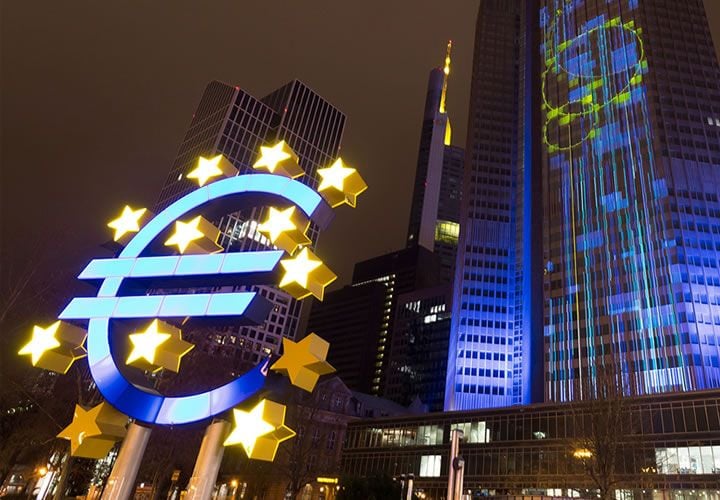Euro Correction Continues Despite Faster Inflation in August
- Written by: James Skinner
-

The euro to US dollar correction has deepened despite higher eurozone inflation, which may be masking weak underlying trends
The euro to US dollar exchange rate correction deepened during the morning session in London after stronger than expected eurozone inflation numbers were seen, by some, as masking weak underlying price pressures.
Headline consumer price inflation came in at 1.5%, up from 1.3% and higher than the consensus forecast among economists that had pointed toward a 10 basis point gain to 1.4%.
The core consumer price index, which excludes volatile food and energy prices from the basket of goods, was in line with expectations - holding steady at 1.2%.
"The uptick in inflation came entirely from energy prices though....So far there’s no real evidence of a sustained improvement in underlying inflation trends, something that will likely keep the ECB very cautious," says Jacqui Douglas, chief European macro strategist at TD Securities.
The euro to US dollar exchange rate edged higher by 10 points to 1.1895 in response to the release, before turning lower and resuming the correction that began during Wednesday's session.
EUR/USD was trading at 1.1862 late in the London morning, some distance below the 1.1982 opening level seen Wednesday and substantially below the 1.2060 peak observed in the Tuesday session.
“A reversal pattern on the candle charts warns that EUR/$ will look for excuses to correct lower. That would mean either US Core PCE surprising on the upside, or the flash EZ CPI for August surprising on the downside,” Chris Turner, head of foreign exchange strategy at ING Group, wrote in his morning note.
Core PCE inflation numbers are due out from the US at 13:30 London time.
The inflation data came alongside a stable eurozone unemployment rate, which sits at 9.1%, as well as improving French and Italian inflation. But German retail sales were seen falling faster than expected during the July month, which may have taken some of the shine off the better price data.
The euro to US dollar exchange rate underwent a deep correction over the course of the Wednesday session and was exacerbated in noon trading by a surge in the ADP jobs number and a steep upward revision to the US second quarter GDP number.
Better than expected eurozone inflation in August may ease possible concerns at the European Central Bank over the common currency’s rise during the year to date.
The euro has gained more than 13% against the dollar and 7% against the pound sterling, both being the currencies of Europe’s two foremost trading partners.
“The euro appreciation will be a headwind to headline and core inflation in the coming years where the ECB’s inflation projection - particularly considering the longer forecast horizon - already seems optimistic,” says Pernille Bomholdt Henneberg, chief analyst at Danske Bank.
The 2017 strength of the euro has already led some to predict the European Central Bank will downgrade its inflation forecasts next week, at its monetary policy press conference, while others have suggested it might make a more overt attempt at talking the euro lower.
German inflation, which makes up the largest component of the collective eurozone basket, rose in line with expectations during August according to data released Wednesday.
However, Spanish consumer price inflation rose at a lesser rate than was expected, edging up by 10 basis points to 1.6% against forecasts for an increase to 1.8%. This is while inflationary pressures are not as strong elsewhere in the eurozone.
“French and Italian figures are closer to 1.0%, and the underlying price pressure remains weak across the euro area, meaning the ECB is likely to stay patient, particularly in light of the stronger euro,” Sverre Holbek, a strategist at Danske Bank, wrote in a note on Wednesday.
Italian consumer prices also saw a faster than expected uplift during August, according to data released Thursday, with the month on month rate increasing from 0.1% to 0.3% during the period.



